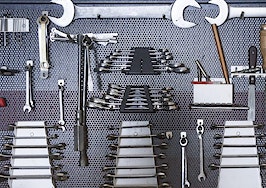- Photography is one of the most essential components of listing a property.
- There is more to photography than a good camera.
- Take some time to capture great photos; it will help sell your listing faster.
It’s been over a year since I last wrote on this topic, a timeframe that might be too long considering that photography is one of the essential components as it relates to real estate.
My original article was titled “6 reasons why a professional home photographer is worth the price,” and it focused on why it is critical to hire a professional photographer.
Now, remember that every listing does not require the services of a professional photographer. However, if the house you are listing is over $1 million dollars, go ahead and read the other article once you finish reading this one.
Now in this article, I am going to focus on what makes good photography good. This way, if you can only hire a semi-professional or have to shoot photos on your iPhone (I hope not), you’ll still end up with usable photography.
The first thing to consider is where you plan to use the photos. Are you only using them on the web? If so, the resolution won’t be much of a problem, but my guess is that you want to use them in print.
It could be for that just sold postcard or that brochure you promised the seller. A photo intended to be printed must be 300 DPI, while a photo that is going to be used on the web needs only be 72 DPI. That is a huge difference.
If you try to print a 5-by-7 photo in 72 DPI as a 5-by-7, it is going to look extremely pixelated, which will have potential buyers throwing it in the trash and never giving it a second thought. And potential sellers will likely never use you as their agent, considering they want to sell their home.
OK, so what is it that makes a photo good? Let’s start with the proper camera, but there is more to it than just a professional camera.
1. Good lighting
If you don’t have good lighting, no matter how good the camera ism you won’t get a good shot. Ultimately, your goal is to balance the lighting in your space. You don’t want some spots to be over-lit, while others are under-lit.
Try to limit photos of the areas in the home that are too dark or too bright. For those that are too dark, you’ll have to add extra lights, and for those that are too bright, try to shield the light with drapes.
Early evening or late afternoon is the ideal time to shoot an exterior.
Dusk is the best time to capture interiors as you can most easily balance the exterior light and the interior light. Make sure to test using the camera lens, what human eyes are capable of fixing a camera can’t.
[Tweet “Try to limit photos of the areas in the home that are too dark or too bright.”]
2. Proper equipment
Make sure that you have a tripod and a wide-angle lens. You’ll want a lens that ranges from 16mm to 24mm to get the optimal wide shot of your listing’s interior. If you go too wide, you risk distorting the space rather than maximizing.
Next on your list should be a tripod. You might think you can take a steady shot, but there is no reason to risk even the slightest blur.
Keep your shots looking sharp by using a tripod. With a tripod you can also take a longer exposure for optimal depth of field; depending on the lighting, you can shoot between one to 20 seconds.
Bring a backup battery, also. It might take a while to get the perfect shot from several angles, and you don’t want your camera to die on you.
No need to settle for OK shots, so shoot until you have the perfect shot. Even professionals have to take hundreds of shots.
3. Set the stage
If the home is empty, this will be more difficult. Creating the perfect composition requires furniture pieces.
Remember that what looks good to the human eye isn’t the same as what looks good on camera.
Look through the camera lens and see what the composition of the room is, and move things around until you have the perfect shot.
If you have plenty of pieces in the home to work with, it might be best to remove pieces that are distracting. Remove anything that has too much color; try to keep it neutral for the most part, but add a few pops of color.
In photos, clutter looks worse than it does to the eye, so if in doubt — remove items from the shot rather than adding.
[Tweet “Remember that what looks good to the human eye isn’t the same as what looks good on camera.”]
4. Copy the pros
Look for photography that you like and try to emulate it. Whether from a magazine or online, collect photos that you feel are well-done and aim to do the same.
Part of making a shot look good is clearing mess. You’ll notice that the photos you admire most are well manicured.
Try to adjust your inspiration to the feel and mood of the home. What do you want buyers to feel when they see the home? Using a beach condo as inspiration for a family-feel home won’t work.
5. Don’t photograph everything
You might want to catalog every single part of the home for other purposes, but those photos should be kept on your personal cloud and not showcased online or in print.
There is no reason to show every single corner of the house or every bathroom. Most angles of a home don’t photograph well, so why show them?
You only need enough photos to pique interest and get people through the door. If you show them too much, you risk turning a buyer off.
Show them just enough to keep them interested; 10 quality photos will go much further than 50 OK photos. If you have too many photos, you risk saturating your audience.
Ultimately, think like your buyer. If you would not buy your listing based on the photography, how do you think potential buyers will feel? Look at and envision everything you do from their point of view.
Laura Ure is the CEO of Keenability, a marketing agency specializing in lifestyle marketing that targets the affluent buyer. Follow her on Facebookor Twitter.







